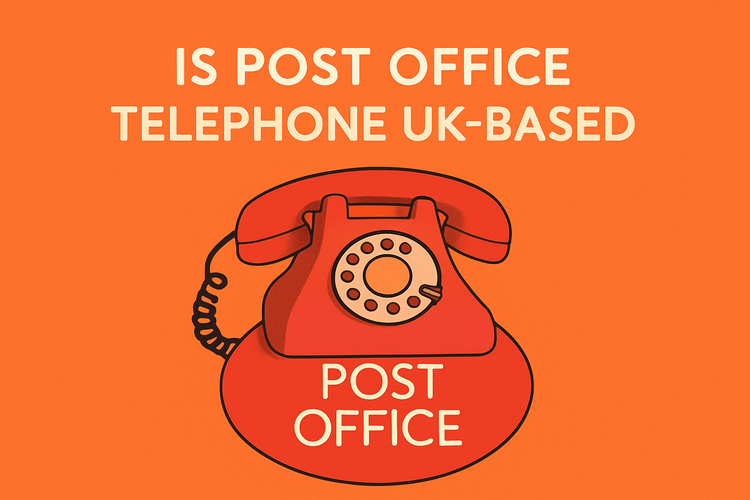Is Post Office Telephone U K Based

Understanding the Role of the Post Office Telephone in the UK
The Post Office telephone system was once the backbone of communication in the UK. Managed by the General Post Office (GPO), it played a significant role in shaping the country's telecommunications infrastructure.
In the earlier half of the 20th century, the General Post Office not only handled postal services but also managed the telecommunication network in the UK. It wasn’t until the 1980s that the telecoms division was split off, eventually forming British Telecom (BT). Before that separation, everything from telephone line installations to operator services was run by the Post Office, making it a centralised, government-controlled utility. Its unified approach helped standardise service quality and expand coverage across both urban and rural areas.
Despite the move away from state control, the legacy of the Post Office telephone operation can still be felt today. Many of the copper lines and infrastructure originally laid by the GPO are still in use, though now managed by private firms like Openreach. A phone line installation in a historic dwelling might still connect to an old GPO junction box—a testament to the enduring craftsmanship and planning of the era.
Technological Advancements from Post Office to BT
The transformation from Post Office to BT ushered in an era of innovation. This move paved the way for modern telecommunication systems in the UK.
Early telephone services under the Post Office were primarily analogue, with rotary dials and operator-assisted calls. The transition to BT marked a shift toward digital technologies, including the introduction of push-button tone dialing, which was faster and more reliable. Moreover, the adoption of fibre optics and automated switching greatly improved call quality and reduced the need for manual operations.
During the 1990s and early 2000s, BT expanded its infrastructure, helping to introduce broadband to millions. Unlike the monopolised era controlled by the Post Office, the telecommunication market post-privatisation saw increased competition. This ultimately benefitted consumers with better service options, faster speeds, and lower prices.
Today, many property developers and builders rely on strong, integrated communication networks to function. This parallels the use of structural elements like joist hangers or post bases, which work behind the scenes to provide essential support. Just like these connectors contribute to a building's integrity, the telephone infrastructure built during the Post Office era forms the backbone of the UK's communication system even now.
The Importance of Infrastructure in Communication
Infrastructure was central to the Post Office’s strategy for national connectivity. From cities to remote villages, establishing reliable communication lines meant building one of the largest public utilities in the UK.
The original telephone poles, underground cables, and switching stations laid out a solid physical foundation. While these installations required investment and time, their longevity proves their worth. Even today, many domestic installations still run on the same copper lines installed decades ago. In this way, the legacy of the Post Office's infrastructure isn't just historical—it's still very much alive and in daily use.
Modern structural applications have a similar focus on durability and compatibility. Just as legacy telecom infrastructure was designed to support long-term use, builders now choose reliable building products like angle brackets or restraint straps that promise extended performance across residential and commercial projects. Sustainability in both communications and construction starts with a robust foundation.
The Shift to Digital and Mobile Technologies
With the age of mobile and internet communication, the significance of traditional Post Office telephone systems has shifted dramatically. Yet the path they paved remains essential to how we connect today.
Telecommunications have evolved from fixed-line services to include Wi-Fi, 5G, and global digital networks. Despite this shift, it's important to remember those digital services ride on infrastructure originally built for analogue purposes. Fibre-optic cables are often channelled through ducting systems or pathways first created during the GPO era. So while the medium has changed, the route largely remains the same.
The evolution of serious installations follows this same path in other industries. For example, advanced products in the construction field, such as timber frame connectors or roof connectors, enhance structural builds by adding features that modernise their application—just like how old copper lines now carry high-speed broadband signals.
The Legacy of the Post Office Telephone Today
Although the Post Office no longer controls telecommunications, its impact continues. Through equipment, education, and infrastructure, its influence is well cemented.
There’s a tangible public nostalgia attached to iconic red Phone Boxes and the sound of the classic British dial tone—elements that defined an era of communication. In many ways, there’s admiration for a time when services were consistent and centralised. That consistency also reflects a broader approach to national planning and public utility management, elements now often replicated in other sectors like construction and logistics.
Modern craftsmanship takes a similar cue. Builders who select products like screws and nails or specialised masonry connectors are continuing the tradition of long-term planning. Just as telephone engineers once mapped and maintained an intricate web of copper lines, today’s trades rely on precise tools and parts to ensure future-proof results.
